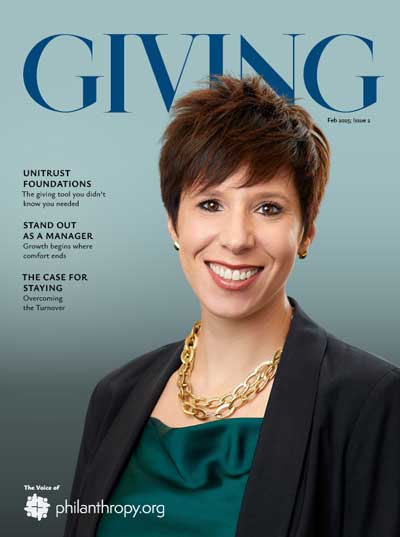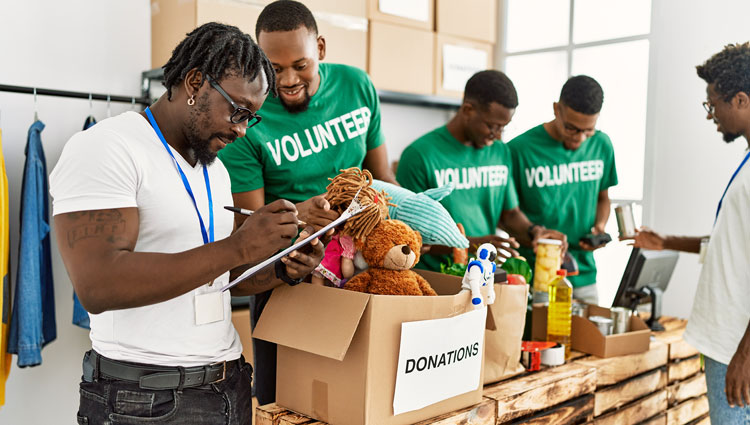For decades, nonprofits have hosted fundraising events that follow a familiar formula: a cocktail hour, a silent auction, a rubber chicken dinner, a few speeches, and a paddle raise. These events raise money—sometimes a lot of it. But too often, they fail to deepen relationships, ignite passion, or create the kind of lasting impact that keeps supporters coming back year after year.
What if we stopped planning events and started creating movements?
Inspired by Will Guidara’s book Unreasonable Hospitality, which chronicles how a Michelin-starred restaurant became world-renowned by making every guest feel deeply seen and valued, I’ve spent the last few years helping nonprofits apply the same principles to their fundraising events. The results have been transformational.
Hospitality as a Strategy, Not a Perk
In the nonprofit world, hospitality is often mistaken for niceties—a smile at registration, a decent meal, maybe a gift bag. But true hospitality is not about perks. It’s about putting people first. It’s about designing every touchpoint of your event with intentionality, curiosity, and care. It’s about asking, “How do we make this person feel genuinely welcomed, understood, and appreciated?”
When we lead with hospitality, we move from transactions to transformations. We create an experience that tells supporters: You matter. You belong. You’re part of something bigger.
This approach changes how nonprofits think about their events. It’s no longer about just hitting a fundraising goal. It becomes about creating an environment where relationships are built, stories are shared, and missions are embraced.
The Little Things Are the Big Things
Unreasonable hospitality lives in the details. At one recent gala, we placed handwritten notes under each guest’s dinner plate, thanking them personally for their specific connection to the organization. For a first-time guest, it was a warm welcome. For a longtime supporter, it was a moment of recognition. For everyone, it was unforgettable.
In another example, a youth services nonprofit welcomed guests with a “story stroll” as they arrived—a series of photo-and-quote installations from beneficiaries, leading into the main event space. This small touch provided an emotional entry point and sparked genuine conversation.
Another organization I work with created a “mission moment concierge” at their event—a staff member dedicated to helping guests connect with a program, beneficiary, or story that aligned with their values. This kind of personalized attention doesn’t require a huge budget, but it does require intention.
Empower Your Team to Delight
Hospitality can’t just come from the top. Volunteers, staff, and even vendors need to feel empowered to surprise and delight. That means giving them the tools, the freedom, and the encouragement to go above and beyond.
We trained our check-in volunteers not just to welcome guests, but to say things like, “Oh! You’re Jamie’s guest—she told us she was excited to introduce you to our work!” That one sentence instantly makes the guest feel recognized, valued, and curious.
It’s equally important to empower behind-the-scenes staff. When AV teams, caterers, and venue managers understand the mission and feel part of the purpose, they often go the extra mile—and that ripple effect can be felt throughout the event.
Events as Emotional Architecture
Your event should be more than a fundraiser—it should be emotional architecture. Every element, from the layout of the room to the order of speakers, should be designed to take guests on a journey. That journey should move them from interest to connection, from connection to conviction, and from conviction to action.
This doesn’t mean overproducing your program. In fact, many successful mission-forward events have pared back the theatrics in favor of authentic storytelling, personal testimonials, and intentional engagement.
One organization that supports cancer patients replaced their annual auction with a curated series of short talks from caregivers and survivors. There wasn’t a dry eye in the house—and donations exceeded expectations.
Create Moments Worth Talking About
One of the key lessons from Unreasonable Hospitality is that people remember how you made them feel, not just what you gave them. So, give them something worth remembering.
At a recent arts education fundraiser, we brought in a group of young students who had benefitted from the program to serve as docents at the pre-event art exhibit. Guests were thrilled to meet the very children they were helping—and the students beamed with pride. It turned an ordinary reception into a shared, emotional moment.
Think of your event as a stage for generosity, but also a stage for connection. Every touchpoint— from signage to table cards to how the valet welcomes guests—is a chance to show you care.
The ROI of Feeling Seen
In a sector obsessed with ROI, here’s a truth we can no longer ignore: people give more when they feel seen, heard, and appreciated. Unreasonable hospitality isn’t fluff. It’s a strategy. One that leads to deeper engagement, stronger relationships, and yes—greater giving.
It also builds trust. When supporters feel valued beyond their wallets, they become advocates. They tell their friends. They come back next year. They bring others with them.
Where to Start
You don’t need a big budget to embrace this approach. Start small:
-
- Train your staff and volunteers to treat every guest like a VIP.
-
- Personalize where you can—names, stories, connections.
-
- Ask yourself before every decision: Does this make people feel welcomed, seen, and valued?
-
- Involve your board in the planning and guest experience, not just fundraising.
-
- Always follow up with gratitude—and make it heartfelt.
It’s Time to Lead with the Heart
It’s time to reimagine our events. To make them less about the program and more about the people. To treat every guest as the guest of honor. And to remember that the most powerful fundraising doesn’t come from the stage—it comes from the heart.
Unreasonable hospitality isn’t about extravagance. It’s about intention. It’s about generosity of spirit. And when nonprofits embrace it, their events become more than fundraisers—they become moments that move people, and movements that endure.







